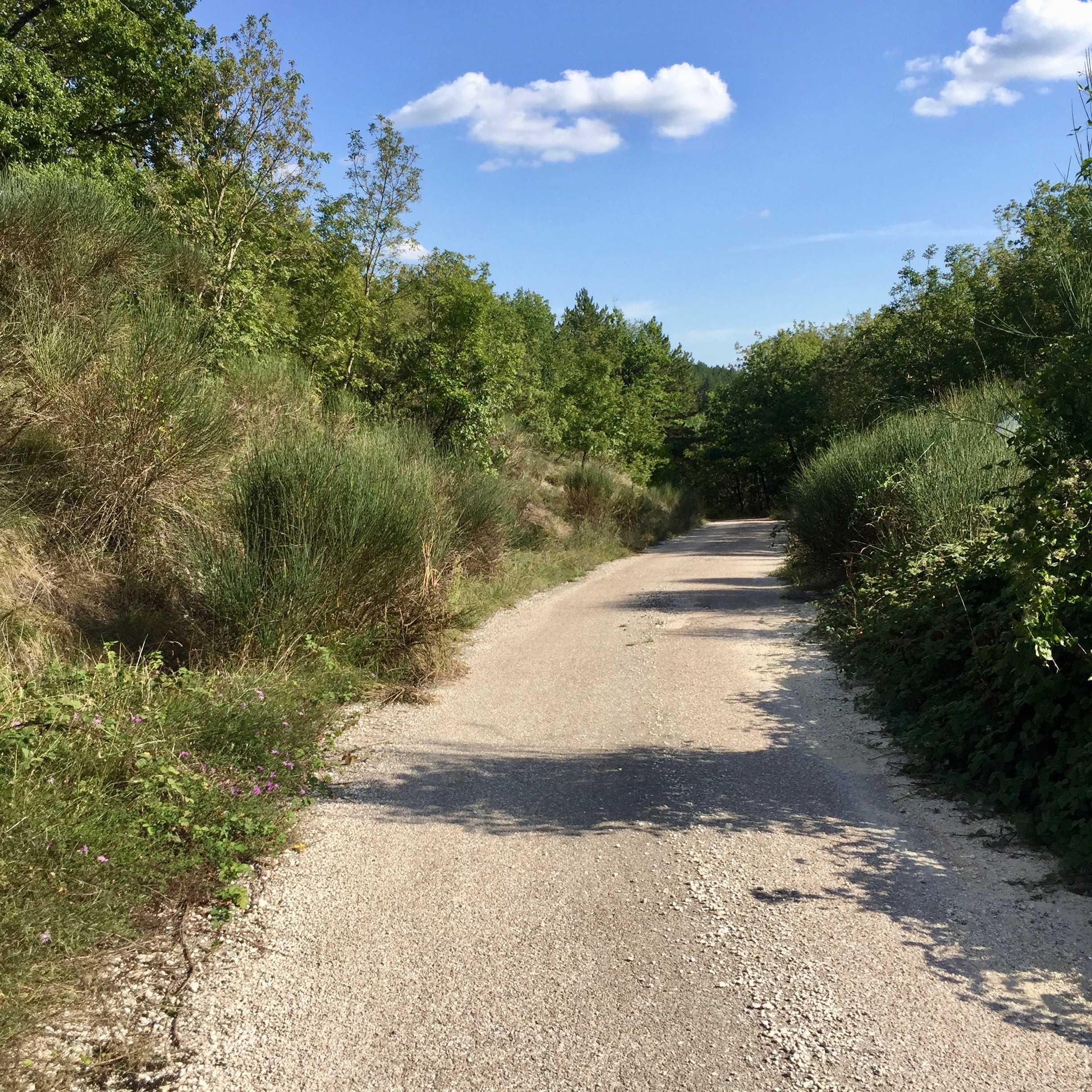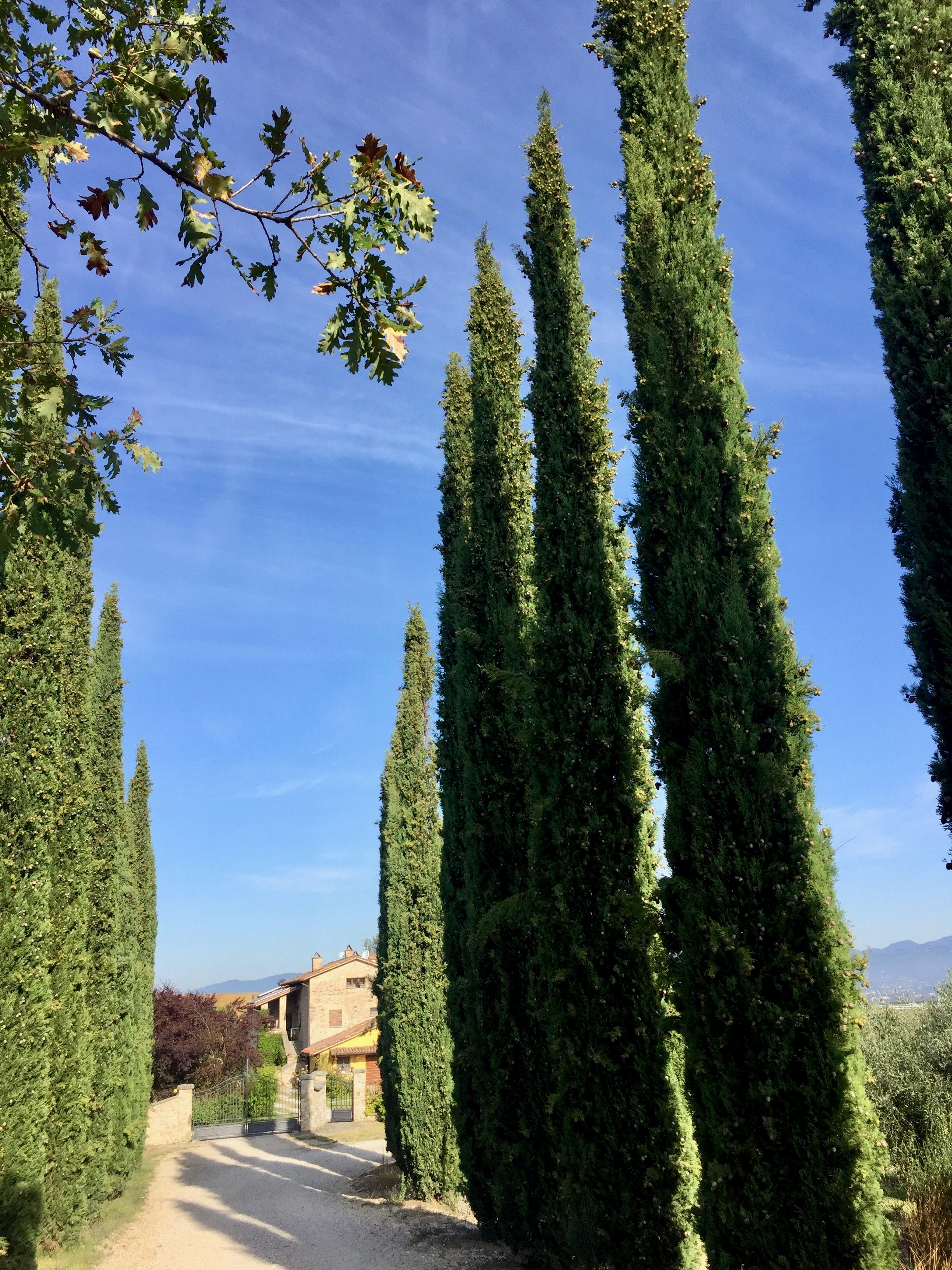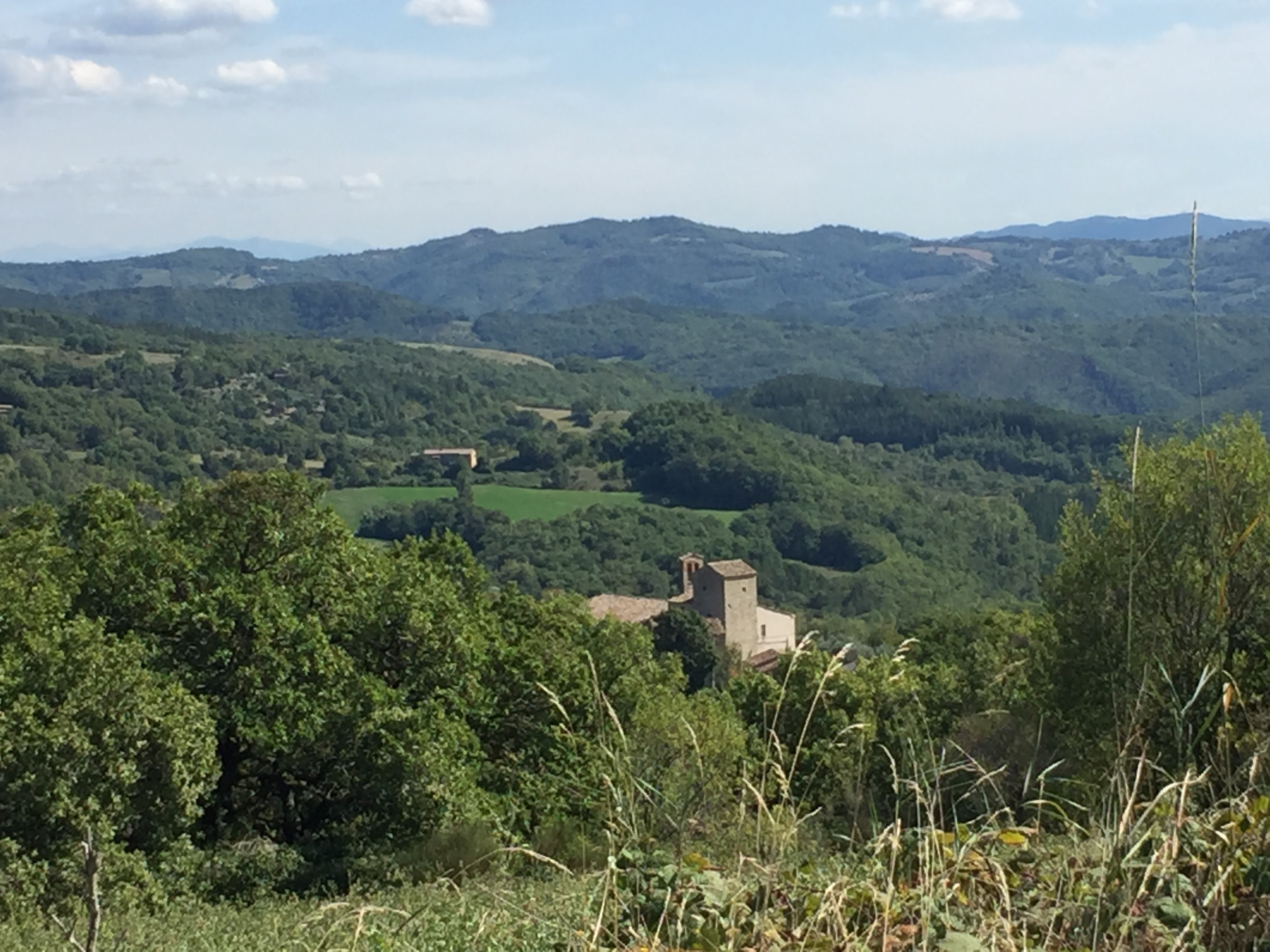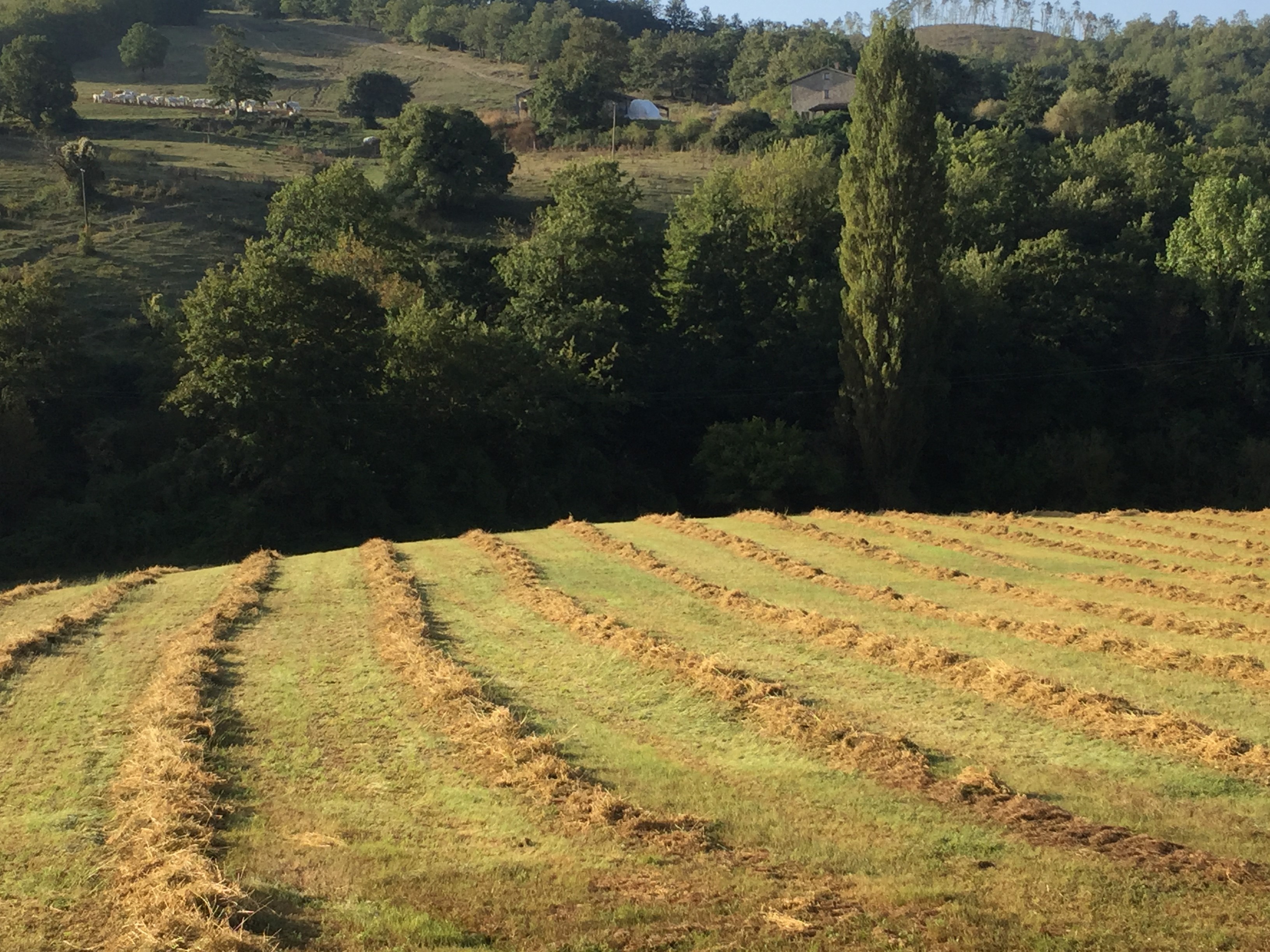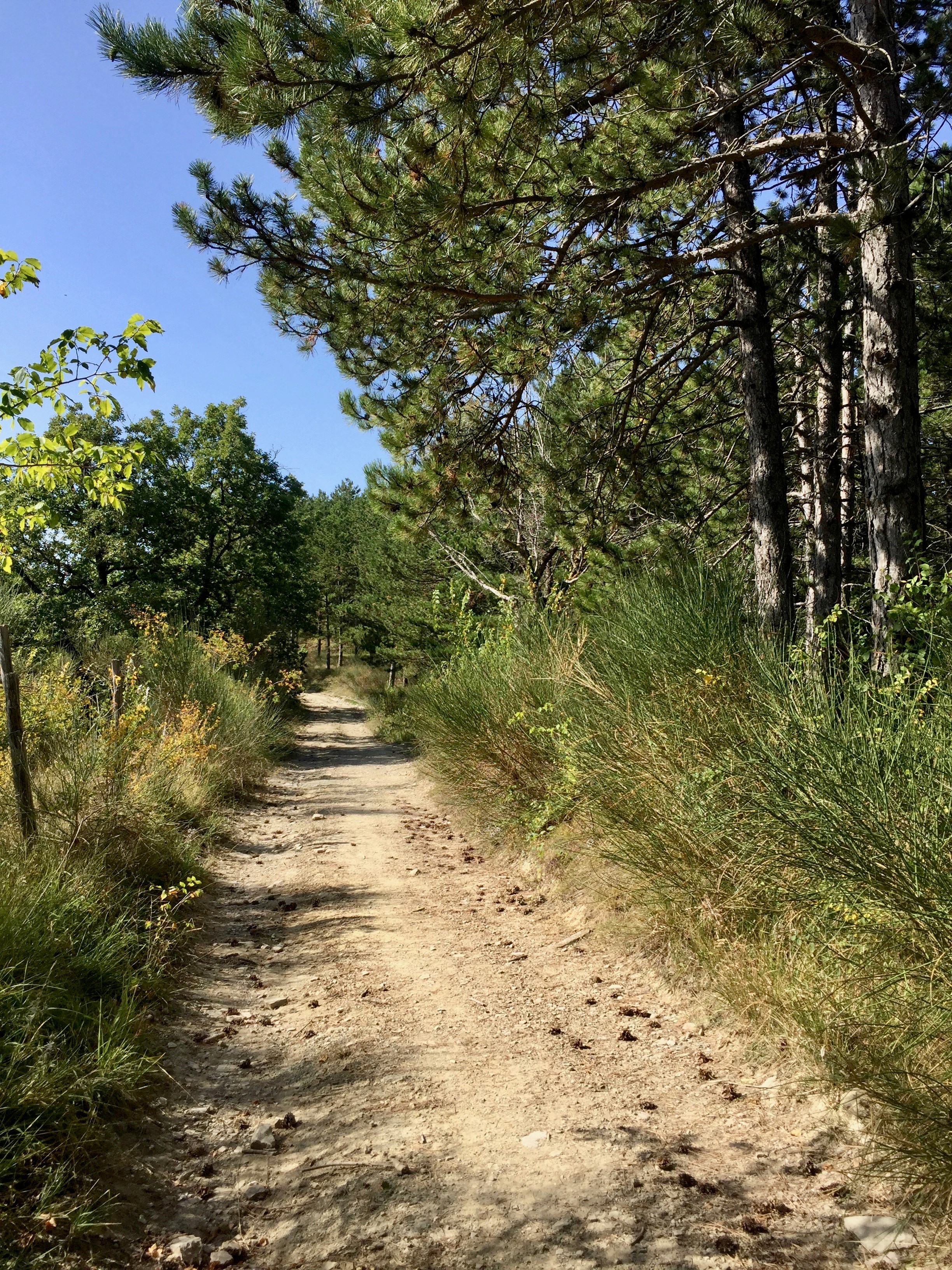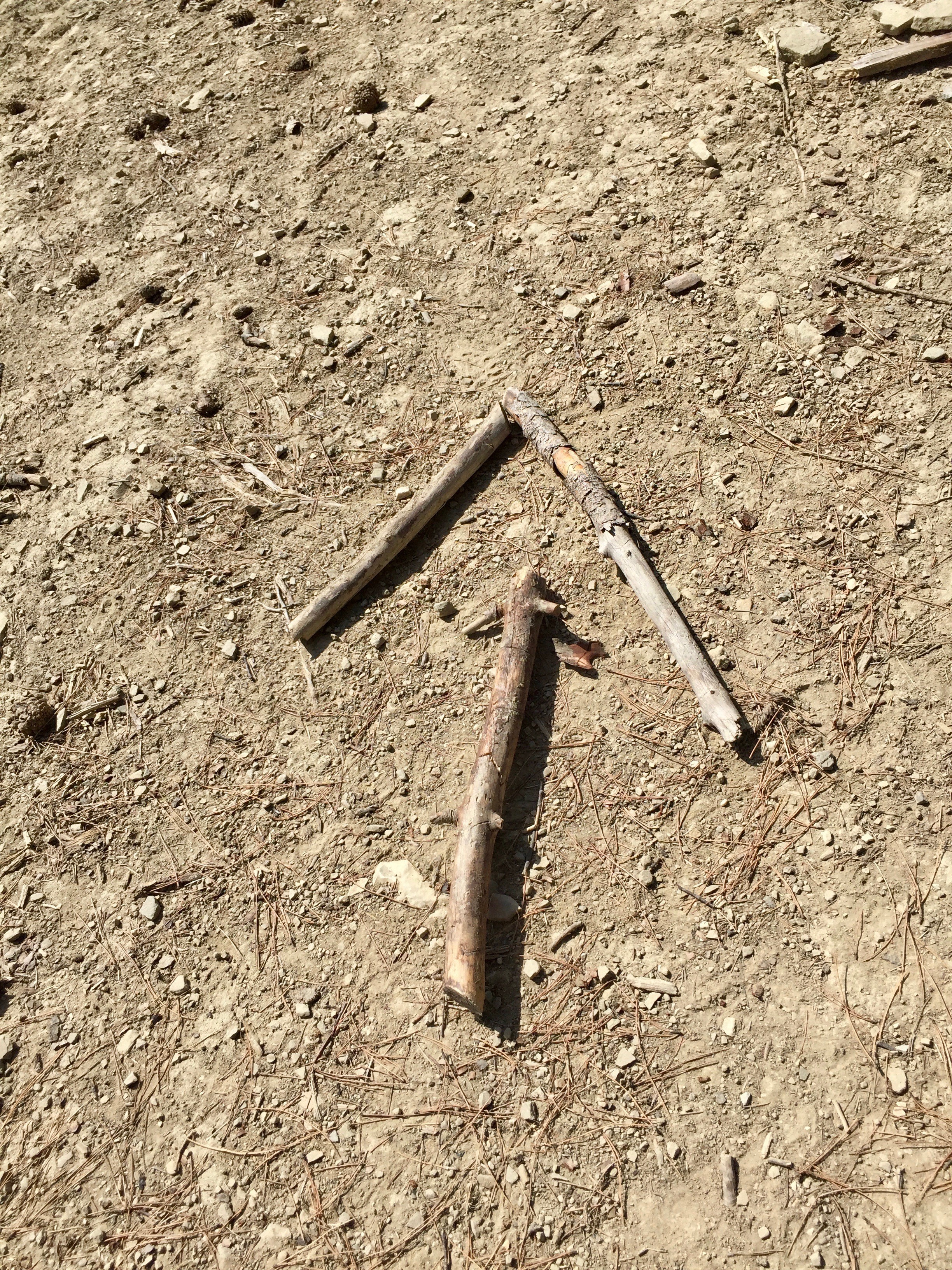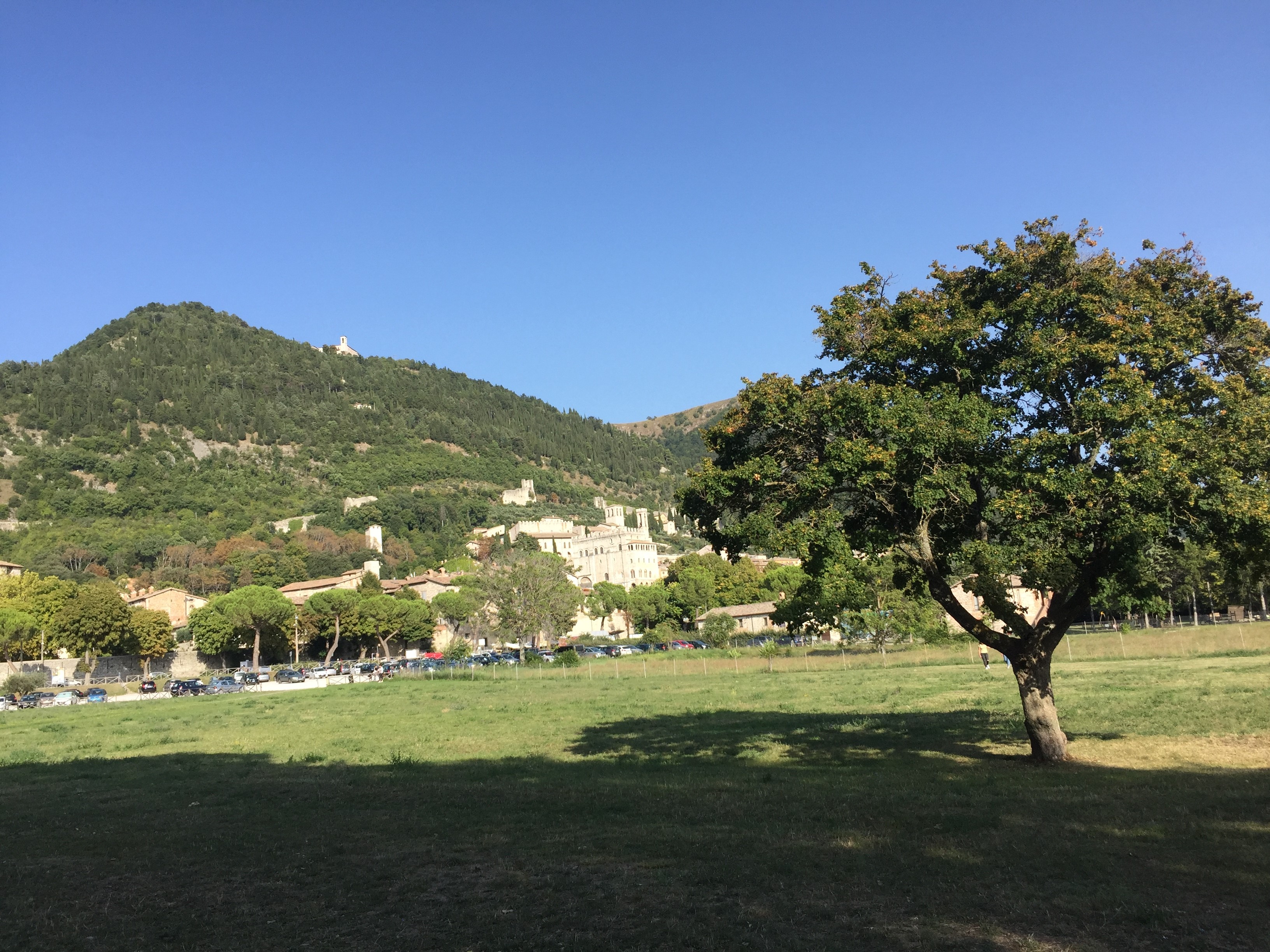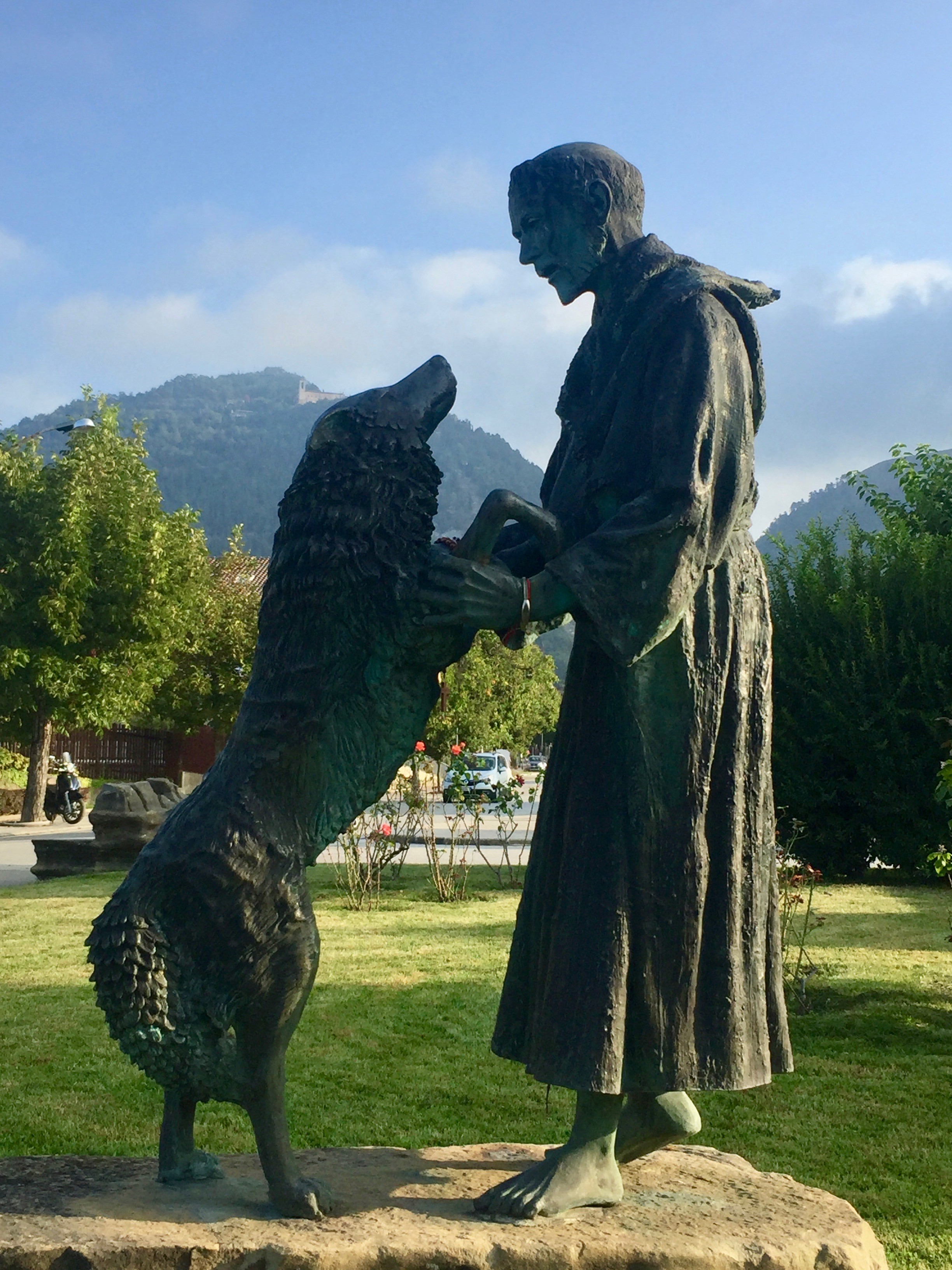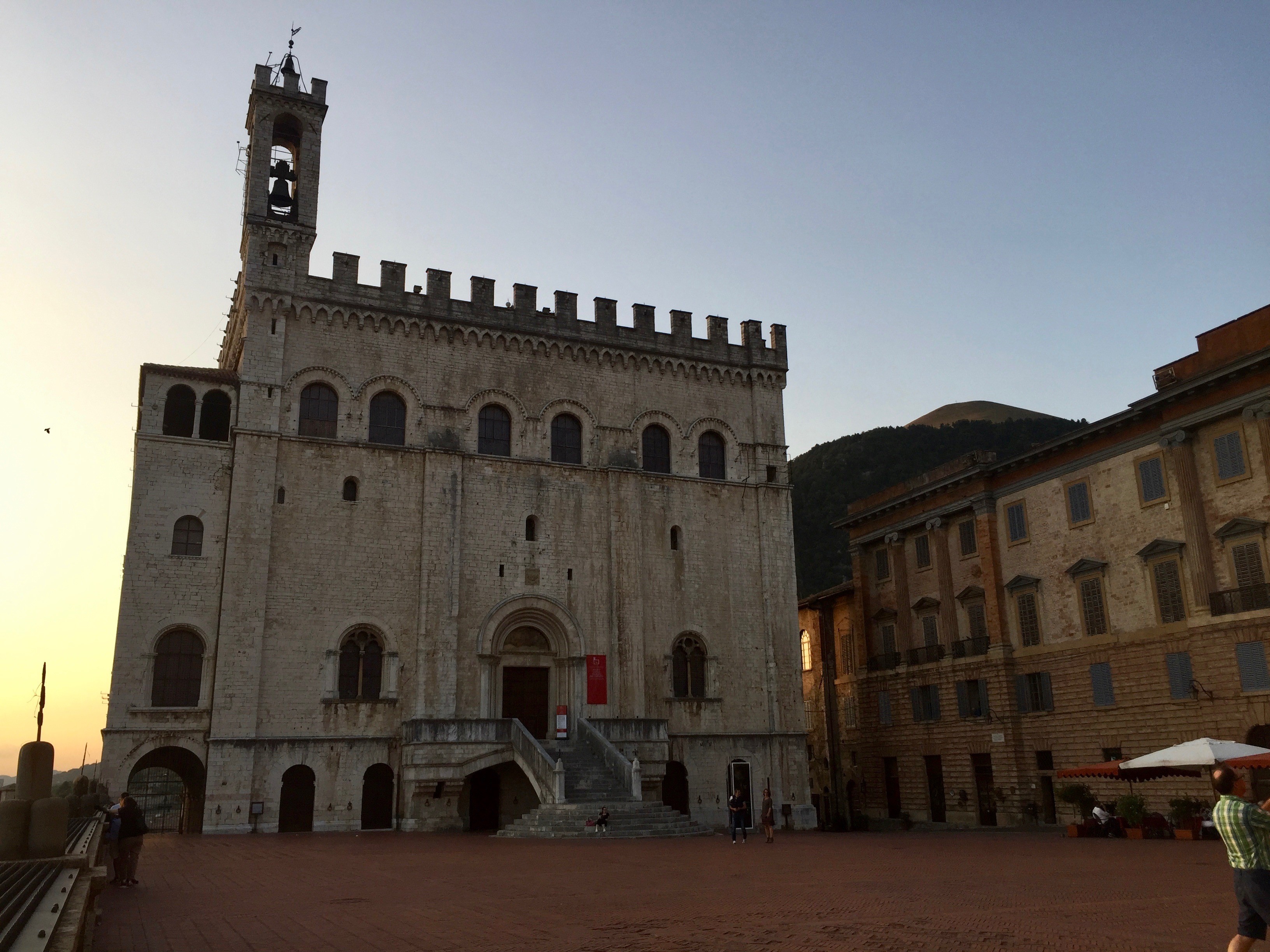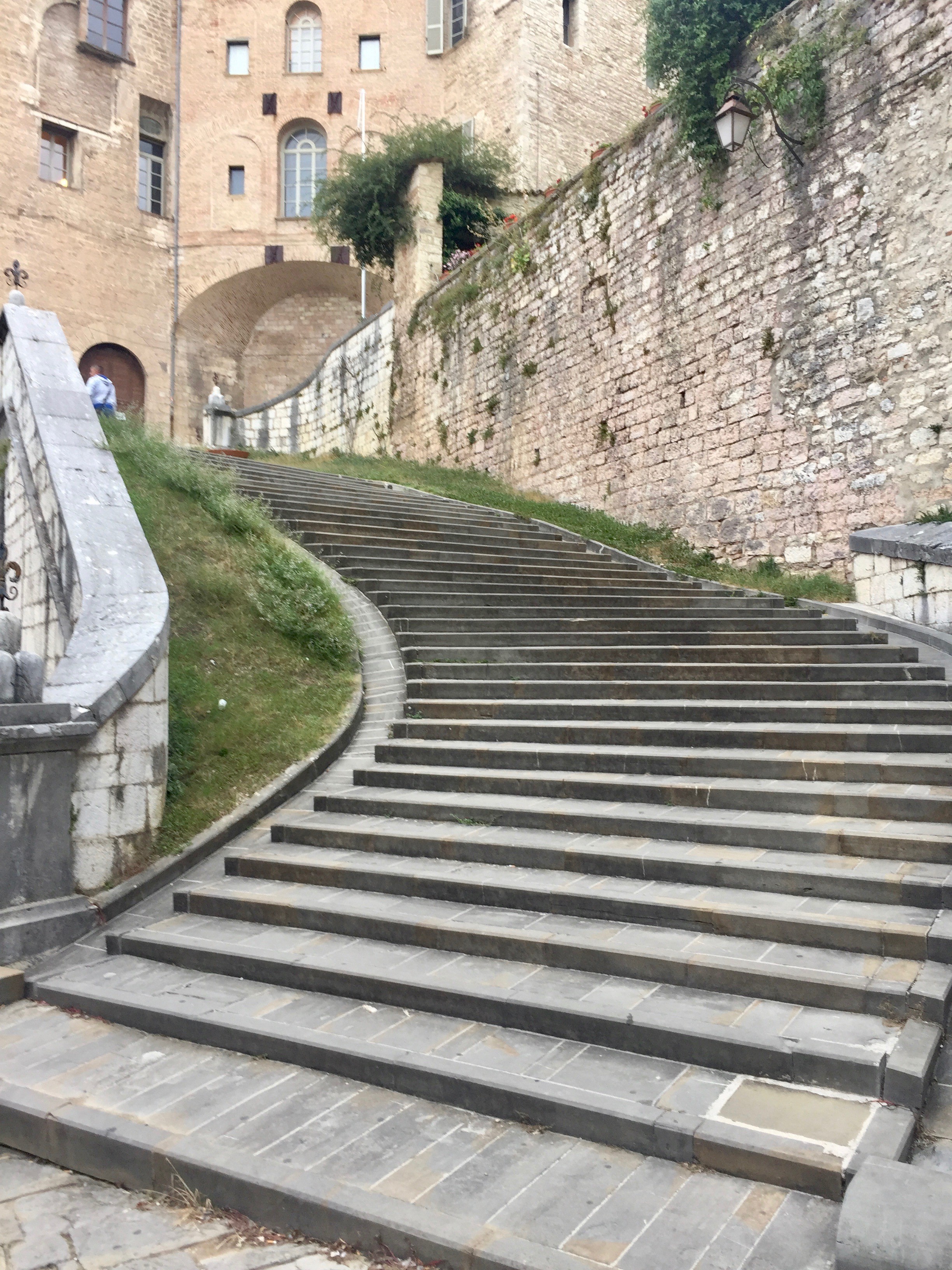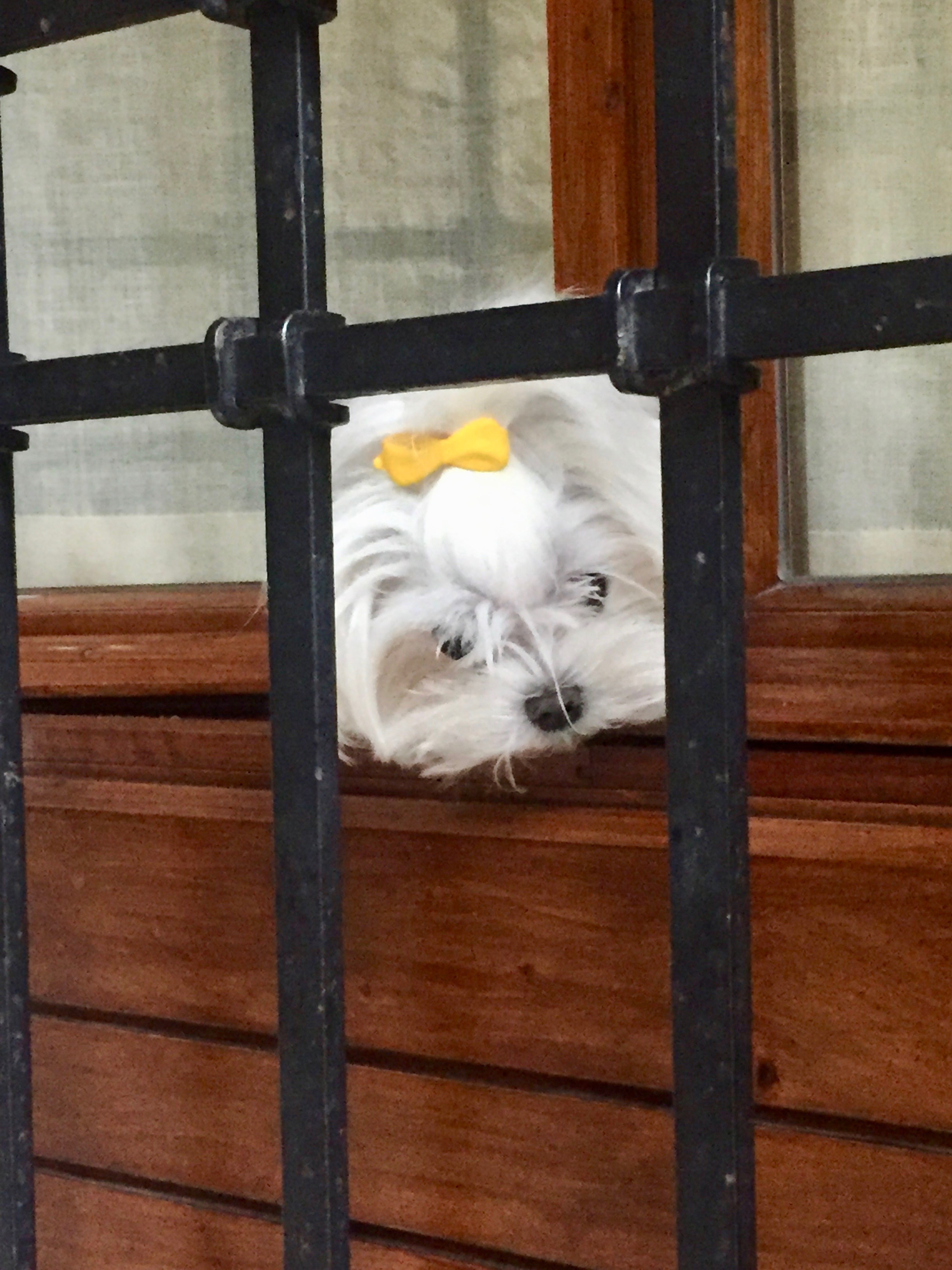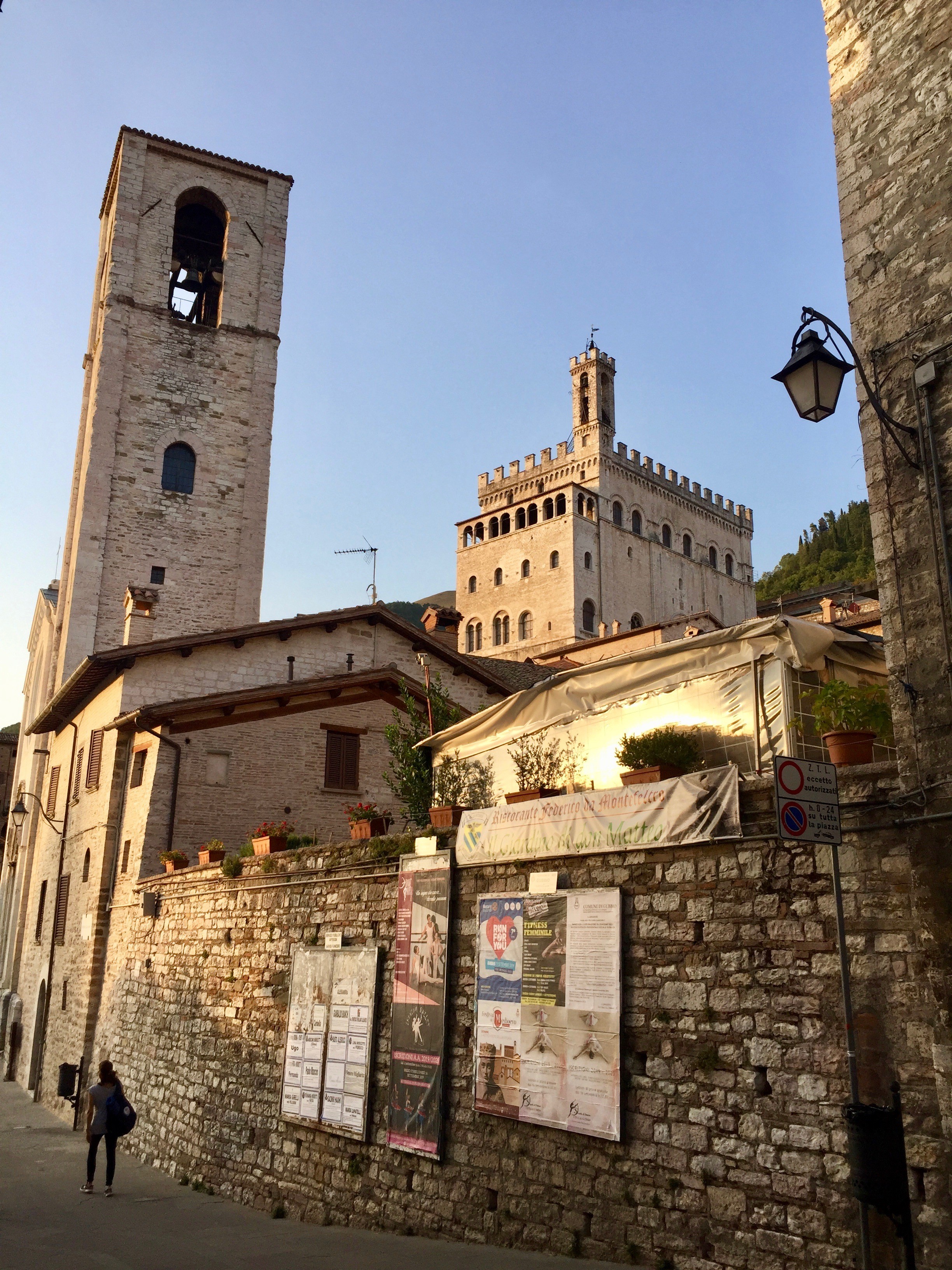(6)
Pilgrimage and the Spirit of Vulnerability
Walking into the unknown means to be ready to take risks. A pilgrimage is an adventure, which needs courage and endurance. The courage most needed, however, is the courage to face vulnerability. When I know my weaknesses, my fears, and my limitations, I can be courageous without being reckless. I can take risks and at the same time I can take care of myself.
During my pilgrimage in Italy, probably the most dangerous situation I am aware of was encounters with vicious dogs. I was lucky and was never attacked. Another risk was walking alone – many things could have happened – I was not afraid and never faced any obvious danger on my way. However, I have one basic fear – it is the fear of getting lost. I do not know where this fear comes from, as I do not remember ever getting really lost. But I have to deal with it.
The two days from Citta della Castella to Gubbio were challenging. In burning heat and no shade, I walked for hours on hot asphalt roads to the town Pietralunga. On my past pilgrimages, I lost several toenails when hiking in this kind of heat. This time, my shoes were big enough and I was fine. In order to give my mind something to do, I memorized a poem from the Book of Hours by Rainer Maria Rilke. It reflected my state of mind.
Du Gott, ich möchte viele Pilger sein,
Um so, ein langer Zug, zu dir zu gehen,
Um ein großes Stück von dir zu sein:
Du Garten mit den lebenden Alleen…
The German version is much better than I can translate. I will translate it freely: You, God, I want to be many pilgrims so I can walk to you as a long line and can become part of you – you, the garden of living alleys…
The countryside was beautiful – hills covered with oak and pine trees and sometimes a stone house, church, or palazzo visible from far away.
However, I was tired of walking on streets. One time, the guidebook suggested an unmarked route through the forest. It was in the middle of nowhere. Should I dare it? It would be much safer to walk on the road where the way was marked. I decided to walk through the forest. It was a gorgeous hike up a mountain. I walked alone, but had a companion with me – the tension in my stomach. After two hours, I linked up to the signed path – what a big relief.
Not many pilgrims walk the path of St. Francis, but those who walk always feel connected. One time, I saw an arrow on the country road and I was sure that somebody wanted to show the right direction of the path. I followed it. After a while, I met two French women pilgrims I had met before. They told me that they had made the arrow for me so I would not get lost. I was very touched.
When I arrived in Gubbio, I went straight to the convent of the Franciscan nuns, where I stayed overnight. It was a huge 14th century complex with many rooms for pilgrims – but only one other female pilgrim was staying here.
View to Gubbio
Gubbio was an important place for St. Francis. During his most vulnerable time after his dispute with his father, he walked nearly naked from Assisi to Gubbio. Only a simple piece of cloth covered his body. St. Francis was considered at this time to be crazy, reckless, and stupid. He had chosen to walk to Gubbio because of a friend – the rich cloth trader Spadalunga. This friend welcomed him in his home and gave him a simple tunic to wear. It later became the model for the clothing of the Franciscan monks.
St. Francis and the wolf
There exists another famous story of St. Francis in Gubbio. It is said that he befriended and tamed a dangerous wolf that threatened the community. St. Francis looked for the wolf and promised it enough food if, in return, it would stop hurting the community. The community agreed to provide food and the wolf stopped its attacks. This story, probably referring to a very greedy person, shows how vulnerability and strength belong together – especially the strength expressed through kindness.
Piazza della Signoria with the Palazzo Consoli (1332-1336 AD)
Gubbio is located on a hill with many stairs and steep streets and has impressive medieval constructions for the support of buildings
Little dog looking out a window behind bars
One of many streets in Gubbio
The two stories about St. Francis in Gubbio have to do with vulnerability and strength. He was not afraid to show his vulnerability. I believe he exposed his vulnerability with the radical break from his old life when he left Assisi nearly naked. However, this act also showed his incredible strength. I believe that this event was the start of his journey to Non-Self.
With the coronavirus spreading all over the world, the vulnerability and fragility of life has become more visible than I ever could have imagined. The virus is unpredictable and very contagious. I have to face my own vulnerability and also the vulnerability of others. I am not afraid. However, I do whatever I can do to help others and also protect myself – and this is by staying at home.

